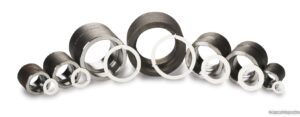Chipping Hammer: The Essential Tool for Weld Cleaning and Metalwork
A chipping hammer is an indispensable hand tool used primarily in welding and metalworking environments. It is specifically designed to remove slag, spatter, and other debris from welded joints, helping to ensure clean, smooth surfaces and strong weld integrity. Whether you’re a professional welder or a DIY enthusiast, understanding the purpose and types of chipping hammers can improve your workflow and final product quality.
What is a Chipping Hammer?
A chipping hammer is a heavy-duty tool featuring a pointed or chisel-shaped head attached to a robust handle. One side of the head typically has a flat chisel blade, while the other has a sharp, pointed tip. This dual-purpose design allows users to break off slag with precision and access tight spaces or irregular surfaces.
Chipping hammers are usually made from hardened steel to withstand the harsh demands of weld cleaning. The handle may be wooden, steel, or rubber-coated to absorb shock and reduce hand fatigue.
Why Use a Chipping Hammer?
In arc welding processes like Shielded Metal Arc Welding (SMAW) or Stick Welding, slag is formed as a byproduct. This slag must be removed after each pass to inspect the weld and apply subsequent layers. A chipping hammer makes this task quick, effective, and safe.
Primary Uses:
- Slag removal from stick or flux-cored welds
- Cleaning spatter and debris off welded surfaces
- Surface preparation for inspection or re-welding
Types of Chipping Hammers
There are several types of chipping hammers available, each suited to different user preferences and work environments:
- Spring Handle Chipping Hammer:
Designed with a spring-style handle that reduces vibration and minimizes user fatigue. Ideal for prolonged use in industrial settings. - Straight Peen Chipping Hammer:
Features a straight chisel and pointed tip for general-purpose slag removal. - Cross Peen Chipping Hammer:
Offers a chisel blade oriented perpendicular to the handle, useful for reaching into corners and narrow spaces. - Cone and Chisel Style:
One end shaped like a cone for striking and the other as a flat chisel for scraping.
Choosing the Right Chipping Hammer
When selecting a chipping hammer, consider the following:
- Material & Durability: Hardened steel is preferred for long life and resistance to wear.
- Handle Design: Choose a spring handle for shock absorption or a rubber grip for comfort.
- Size & Weight: Lighter hammers are easier to maneuver, while heavier ones provide more striking power.
Maintenance Tips
To keep your chipping hammer in good condition:
- Regularly clean off debris after use
- Inspect for any signs of wear or handle damage
- Store in a dry place to avoid rust
Conclusion
A chipping hammer may be simple in design, but it’s a critical tool in any welder’s arsenal. From removing slag to preparing surfaces, this tool ensures welds are clean, strong, and visually acceptable. Choosing the right type based on your workflow can enhance productivity, improve weld quality, and reduce fatigue. Whether you’re working on industrial projects or small-scale metal fabrication, don’t underestimate the value of a reliable chipping hammer.





















